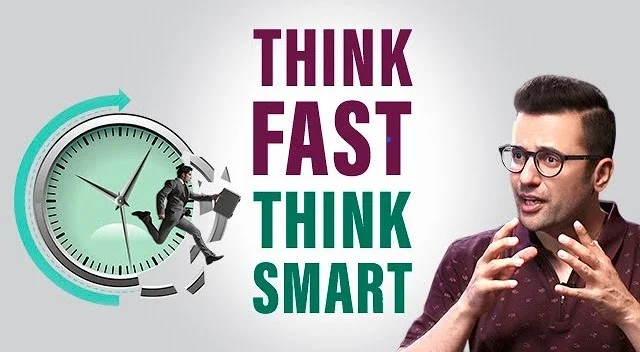Introduction
Ever pondered the enigma behind impulsive decisions versus methodical analyses? Dive into the cognitive realms shaped by the fast and slow thinking systems, orchestrating the dance of choices. In this exploration, we delve into the intricate concepts of fast and slow thinking and their profound impact on the decision-making tapestry.
System One: The Swift Maestro of Fast Thinking
The Ballet of Automatic Responses
Enter System One, the swift maestro orchestrating our automatic and instinctive responses. Effortlessly propelling us through simple tasks, this system paints a canvas where shapes and sentences are instantaneously recognized. Yet, amidst its brilliance, System One, akin to a captivating illusionist, occasionally leads us into cognitive mazes, fostering errors in judgment.
System Two: The Contemplative Artistry of Slow Thinking
The Symphony of Concentrated Effort
Contrastingly, System Two, the contemplative virtuoso, demands conscious effort and deliberate mental engagement. Unleashing its prowess in tackling complex tasks, this system becomes the guiding force behind critical thinking and problem-solving. It weaves a tapestry of concentration and focus, particularly when faced with the intricacies of challenging questions.
The Interplay: Harmonizing the Dichotomy
The Synchronized Ballet of Systems One and Two
In the daily choreography of decision-making, Systems One and Two pirouette in unison. While System One gracefully navigates routine tasks, System Two takes center stage in the face of complexity. Recognizing their distinct strengths and limitations becomes the compass guiding us toward informed choices.
Striking a Cognitive Symphony
Psychologists Keith Stankovic and Richard Nisbett advocate for a harmonious equilibrium between the listening finesse of System One and the concentrated attention of System Two. They posit that balancing these dual systems enhances not just intelligence but the very fabric of decision-making itself.
Unlocking the Cognitive Vault: Harnessing the Might of System Two
Mental Gymnastics for Cognitive Prowess
Unlocking the power of System Two entails engaging in mental gymnastics. Activities like reading, puzzle-solving, and critical thinking exercises emerge as the crucible for refining System Two's acumen. A kaleidoscope of mental challenges sharpens the thinking toolset.
The Invisible Gorilla: A Ballet of Cognitive Illusions
Cognitive Illusions: The Dance of Perception and Misjudgment
Within the cognitive ballet, a captivating act unfolds—cognitive illusions. The "invisible gorilla" experiment by psychologists Christopher Chabris and Daniel Simons epitomizes this phenomenon. Participants, entranced by counting passes, overlook a gorilla-suited figure, highlighting how intense focus births cognitive illusions.
Harmonizing Chaos: The Power of System One and Two Balance
Navigating Cognitive Jigsaws with Precision
Understanding the dynamic duet of System One and Two becomes a compass for achieving cognitive balance. Awareness of each system's intricacies empowers decision-makers to tread the tightrope of choices, avoiding the pitfalls of cognitive illusions. Striking a balance ensures a seamless dance between the automatic responses and deliberate contemplations.
Cognitive Diversity: Celebrating the Mind's Complexity
Crucially, cognitive illusions aren't indicators of intelligence or mental health but reflections of information processing. By acknowledging these illusions and honing our mental prowess, we unravel the depths of decision-making complexity.
Curtain Call: The Culmination of Fast and Slow Thinking
The interplay of fast and slow thinking paints an entrancing table of the mind's workings. Recognizing their nuances equips us to make astute decisions, amplifies concentration, and unlocks the latent reservoirs of subconscious power. The crux lies in the delicate equilibrium between the rapid reflexes of System One and the intentional musings of System Two. Train your mind, expand your cognitive repertoire, and embrace the kaleidoscope of fast and slow thinking.
FAQs: Unveiling the Enigmatic Mindscape
1. How can I elevate my System Two thinking?
- Immerse yourself in cognitive challenges, from intricate reads to mind-bending puzzles and critical thinking exercises.
2. What makes the "invisible gorilla" experiment significant?
- This experiment illuminates cognitive illusions, showcasing how intense focus can blind us to certain stimuli.
3. How do System One and System Two collaborate in decision-making?
- System One handles routine tasks, while System Two takes charge in unfamiliar scenarios, creating a harmonious decision-making symphony.

